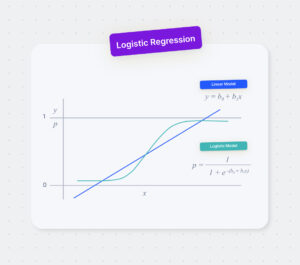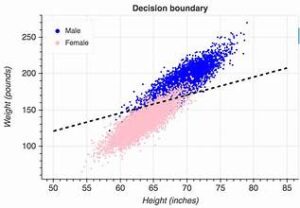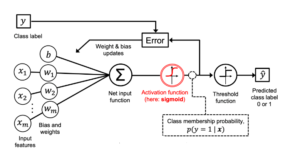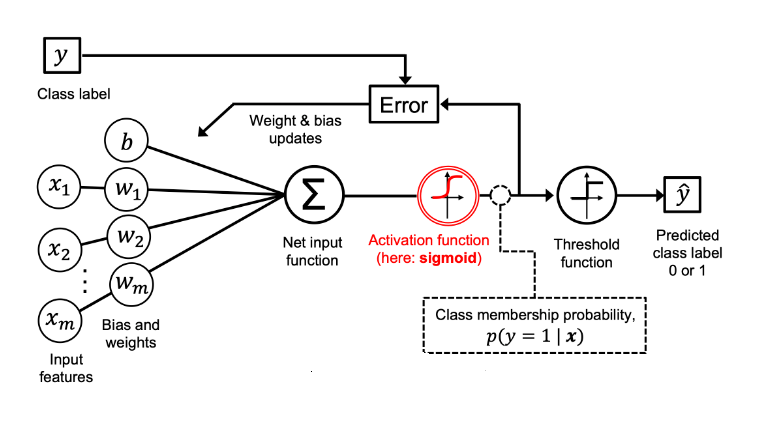
In 2024, logistic regression is making waves in the field of data analysis, driving transformative changes across various industries. This statistical method, traditionally employed for binary classification problems, has evolved into a powerful tool for understanding complex data patterns and informing decision-making. This article delves into how logistic regression is revolutionizing data analysis, its modern applications, and its impact on different sectors.
Understanding Logistic Regression
Logistic regression is a type of regression analysis used for binary classification tasks. Unlike linear regression, which predicts a continuous outcome, logistic regression predicts the probability of a binary outcome based on one or more predictor variables. The core of logistic regression is the logistic function, also known as the sigmoid function, which maps predicted values to probabilities between 0 and 1.
Mathematically, logistic regression models the relationship between the dependent variable and one or more independent variables using the following equation:
P(Y=1)=11+e−(β0+β1X1+β2X2+…+βnXn)P(Y=1) = \frac{1}{1 + e^{-(\beta_0 + \beta_1X_1 + \beta_2X_2 + … + \beta_nX_n)}}P(Y=1)=1+e−(β0+β1X1+β2X2+…+βnXn)1
where P(Y=1)P(Y=1)P(Y=1) represents the probability of the event occurring, β0\beta_0β0 is the intercept, and βi\beta_iβi are the coefficients of the predictor variables XiX_iXi.
Evolution and Advancements in 2024
1. Enhanced Model Interpretability
In 2024, logistic regression has seen significant advancements in model interpretability. Modern tools and techniques have improved the transparency of logistic regression models, allowing analysts to better understand the relationship between predictors and the outcome. Feature importance and interaction effects can now be more easily visualized, helping stakeholders make informed decisions based on clear, interpretable results.
2. Integration with Machine Learning Pipelines
Logistic regression is increasingly being integrated into machine learning pipelines. This integration enhances its utility in complex data analysis tasks, combining logistic regression with other algorithms and techniques such as ensemble methods and neural networks. This hybrid approach allows for more accurate and robust predictions, leveraging the strengths of logistic regression while addressing its limitations.
3. Handling Imbalanced Datasets
Addressing class imbalance remains a critical challenge in data analysis. In 2024, logistic regression has adapted to better handle imbalanced datasets through techniques such as SMOTE (Synthetic Minority Over-sampling Technique) and cost-sensitive learning. These advancements improve the model’s performance in scenarios where one class is significantly underrepresented, leading to more reliable and fair outcomes.
4. Real-Time Analytics and Decision-Making
With the rise of real-time data collection and analysis, logistic regression has evolved to support real-time analytics. Modern logistic regression models can process streaming data, enabling businesses to make instantaneous decisions based on the most current information. This capability is particularly valuable in dynamic environments such as financial markets and online retail.
5. Enhanced Computational Efficiency
Computational efficiency has been a focal point in the evolution of logistic regression. Advances in algorithms and hardware have significantly reduced the time required to train and deploy logistic regression models. This improvement enables analysts to work with larger datasets and more complex features without sacrificing performance.
Applications of Logistic Regression in 2024
1. Healthcare
In healthcare, logistic regression is used to predict patient outcomes, assess risk factors, and personalize treatment plans. By analyzing patient data, such as medical history and lab results, logistic regression models can identify individuals at high risk for certain conditions, allowing for early intervention and more effective management of diseases.
2. Finance
The finance industry leverages logistic regression for credit scoring, fraud detection, and risk assessment. By analyzing transaction data and customer profiles, logistic regression models can predict the likelihood of loan default or fraudulent activity, helping financial institutions mitigate risks and make better-informed decisions.
3. Marketing
Marketing professionals use logistic regression to optimize campaign strategies and understand customer behavior. By analyzing consumer data, such as purchase history and online interactions, logistic regression models can identify factors that drive customer conversion, allowing businesses to tailor their marketing efforts and improve ROI.
4. Human Resources
In human resources, logistic regression is employed for employee retention analysis and recruitment. By examining factors such as employee satisfaction and performance metrics, logistic regression models can predict which employees are at risk of leaving the company and help HR departments implement effective retention strategies.
5. E-commerce
E-commerce platforms utilize logistic regression to enhance user experience and increase sales. By analyzing browsing behavior and purchase patterns, logistic regression models can provide personalized product recommendations and optimize pricing strategies, leading to higher conversion rates and customer satisfaction.
The Future of Logistic Regression
Looking ahead, logistic regression will continue to evolve, driven by advancements in data science and technology. Emerging techniques, such as interpretable machine learning models and advanced optimization algorithms, will further enhance its capabilities. Additionally, the integration of logistic regression with artificial intelligence and big data analytics will open new possibilities for data-driven decision-making.
In conclusion, logistic regression is revolutionizing data analysis in 2024 by offering enhanced interpretability, integration with machine learning, improved handling of imbalanced datasets, real-time analytics, and greater computational efficiency. Its applications across various industries demonstrate its versatility and impact, making it a crucial tool for modern data analysis. As technology continues to advance, logistic regression will remain at the forefront of data-driven insights and decision-making.



